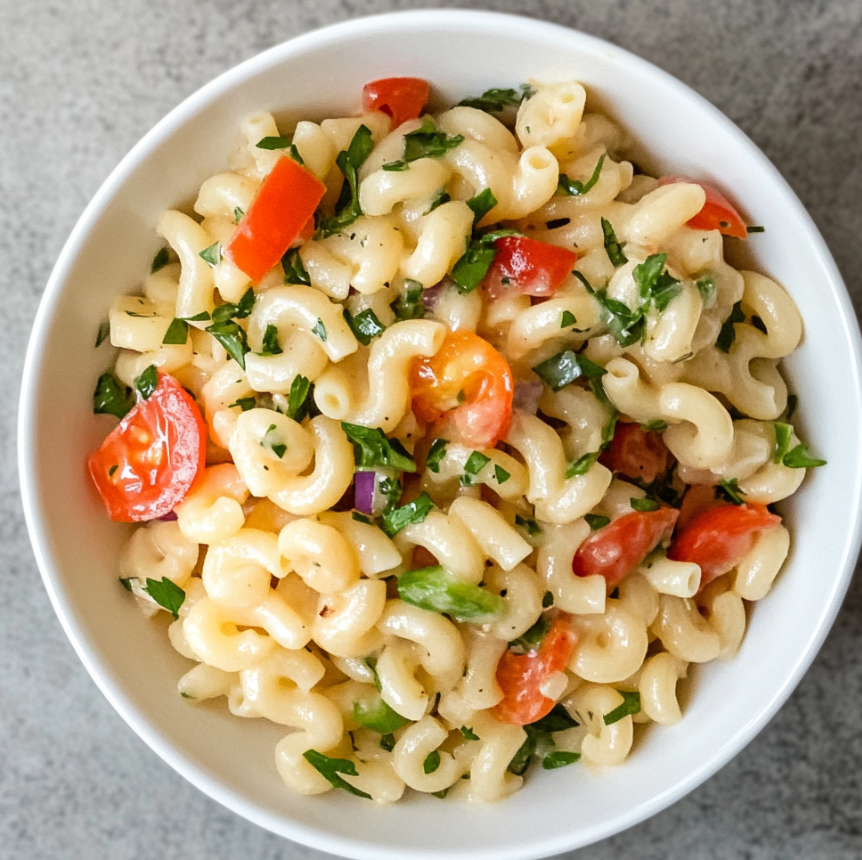Introduction
Pasta salad is a popular dish for picnics, barbecues, and family gatherings, but it can be frustrating when it turns out bland and lacking in flavor. Understanding the common reasons behind this and knowing how to fix them can transform your pasta salad from dull to delicious. In this article, we’ll explore why your pasta salad might be bland and how to enhance its flavor to create a crowd-pleasing dish.

- Introduction
- The Role of Ingredients in Pasta Salad Flavor
- Common Mistake 1: Underseasoning the Pasta
- Common Mistake 2: Using the Wrong Dressing
- Common Mistake 3: Not Adding Enough Acid or Salt
- Advanced Tip 1: Layering Flavors
- Advanced Tip 2: Letting the Salad Rest Before Serving
- Advanced Tip 3: Incorporating Texture for Enhanced Flavor
- Frequently Asked Questions (FAQ)
The Role of Ingredients in Pasta Salad Flavor
The ingredients you choose play a crucial role in the overall flavor of your pasta salad. Pasta type, freshness of ingredients, and quality of dressing are all key factors that can either enhance or detract from the taste.
- Pasta Type: The type of pasta you use can significantly affect the flavor of your salad. Short, ridged pasta shapes like rotini or penne are ideal because they hold onto the dressing better, ensuring each bite is flavorful.
- Freshness of Ingredients: Fresh vegetables, herbs, and other components contribute vibrant flavors to your salad. Using ingredients that are past their prime can result in a bland taste.
- Quality of Dressing: The dressing is the backbone of your pasta salad. Whether homemade or store-bought, the dressing should have a balance of flavors—creamy, tangy, and a bit of sweetness. For more on how to make a flavorful pasta salad, check out how to make better pasta salad.
Common Mistake 1: Underseasoning the Pasta
One of the most common mistakes that lead to a bland pasta salad is underseasoning the pasta itself. Pasta water should be well-seasoned, as this is your first opportunity to infuse the pasta with flavor. Cold pasta dishes, in particular, often require more seasoning because cold temperatures dull our taste buds.
To properly season the pasta, add a generous amount of salt to the boiling water before adding the pasta. The water should taste like the sea. This helps the pasta absorb the salt, enhancing its flavor even before you add any dressing. If you’re unsure about how to achieve the right seasoning, check out these mistakes to avoid when making pasta salad.

Common Mistake 2: Using the Wrong Dressing
The dressing is a critical element in ensuring your pasta salad is flavorful. Using the wrong dressing, or not enough of it, can result in a bland dish. The dressing should have a good balance of flavors—creamy, tangy, and slightly sweet. If you’re using a store-bought dressing, consider enhancing it with additional ingredients like fresh herbs, lemon juice, or a dash of mustard.
Another common issue is the dressing being too thick or too thin. A thick dressing might not coat the pasta evenly, while a thin dressing can leave the salad watery. To achieve the right consistency, you can adjust the dressing by adding a little water or oil to thin it out, or by incorporating more mayonnaise or yogurt to thicken it.
For example, if you’re working with a BLT pasta salad, consider exploring the BLT pasta salad recipe for dressing ideas that might elevate the flavor.

Common Mistake 3: Not Adding Enough Acid or Salt
Acid and salt are two components that can make or break the flavor of your pasta salad. Acid, such as vinegar or lemon juice, brightens the flavors and adds a refreshing tang, while salt enhances the taste of other ingredients.
If your pasta salad tastes bland, try adding a bit more acid or salt. Start with small amounts, taste, and adjust as needed. Remember, it’s easier to add more than to fix an overly salty or acidic dish.
Balancing these flavors is key to a well-rounded and delicious pasta salad. For example, a simple squeeze of lemon juice can elevate the entire dish, making the flavors more vibrant and cohesive. For more insights, you might also want to read about why your pasta salad might not be creamy, as it could provide additional tips on achieving a balanced flavor.
Advanced Tip 1: Layering Flavors
One of the best ways to enhance the flavor of your pasta salad is by layering flavors. This technique involves building up different taste elements throughout the preparation process.
- Herbs and Spices: Add fresh herbs like basil, parsley, or dill at different stages to infuse the salad with their aromas.
- Condiments: Mix in condiments such as Dijon mustard or a splash of hot sauce to add complexity.
- Cheese: Incorporate different types of cheese like feta, Parmesan, or cheddar to provide depth and richness.
Layering flavors ensures that every bite of your pasta salad is packed with taste, preventing it from feeling one-dimensional.
Advanced Tip 2: Letting the Salad Rest Before Serving
Allowing your pasta salad to rest before serving is essential for letting the flavors meld together. When you let the salad sit, the dressing has time to penetrate the pasta and vegetables, making the salad more flavorful.
Ideally, you should prepare your pasta salad a few hours in advance and let it chill in the refrigerator. If possible, make it the day before to allow the flavors to fully develop. Just remember to give it a good stir before serving to redistribute the dressing and ingredients.
For additional tips on achieving the perfect flavor, consider checking out the article on pasta salad mistakes to avoid.
Advanced Tip 3: Incorporating Texture for Enhanced Flavor
Texture plays a crucial role in how we perceive flavor. Adding crunchy elements like nuts, seeds, or croutons can make your pasta salad more interesting and flavorful.
- Nuts and Seeds: Toasted pine nuts, sunflower seeds, or sliced almonds add a satisfying crunch and a nutty flavor.
- Croutons: Homemade croutons can add a crispy texture that contrasts nicely with the softness of the pasta.
- Vegetables: Including a mix of raw and cooked vegetables can provide a variety of textures, enhancing the overall eating experience.
By incorporating different textures, you not only make the salad more enjoyable to eat but also enhance the perception of flavor.
Frequently Asked Questions (FAQ)
Why does my pasta salad taste bland after chilling?
When pasta salad chills, the cold temperature can dull the flavors. To combat this, add a little extra seasoning or a splash of vinegar or lemon juice before serving.
How can I fix bland pasta salad after it’s made?
To fix bland pasta salad, try adding more dressing, a pinch of salt, or a squeeze of lemon juice. You can also incorporate fresh herbs or a flavorful cheese to boost the taste.
What’s the best way to season pasta salad?
The best way to season pasta salad is to start by salting the pasta water generously. Use a flavorful dressing and taste as you go, adjusting the seasoning with salt, acid, and herbs.
Can I add more dressing if the pasta salad is bland?
Yes, you can add more dressing to enhance the flavor. If the salad is too dry, a bit of extra dressing can also improve the texture.
How long should pasta salad sit before serving?
Pasta salad should sit for at least 30 minutes to allow the flavors to meld. For the best results, chill it in the refrigerator for a few hours or overnight.

